Marine Biology & Global Change Part Two
1/27
Earn XP
Description and Tags
Exam 4
Name | Mastery | Learn | Test | Matching | Spaced |
|---|
No study sessions yet.
28 Terms
What are the additional consequences besides warmer temp?
- Ice Sheet Reduction
- Sea level rise
- Storm increase
Ice Update 2020
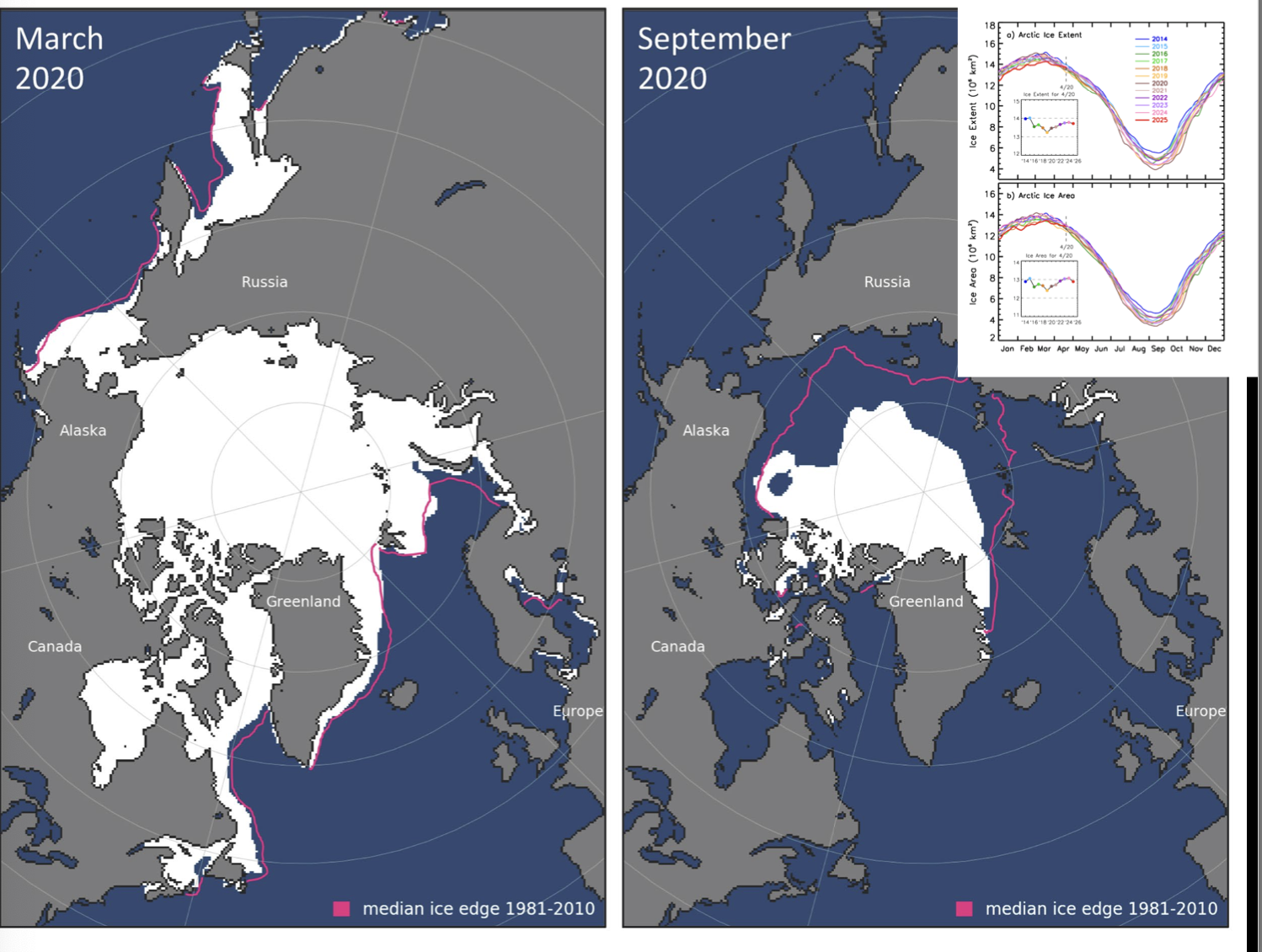
Ice Area New Low
High variability in the summer and lower variability in the winter
Lowest extent and area ever recorded was this March, 2025
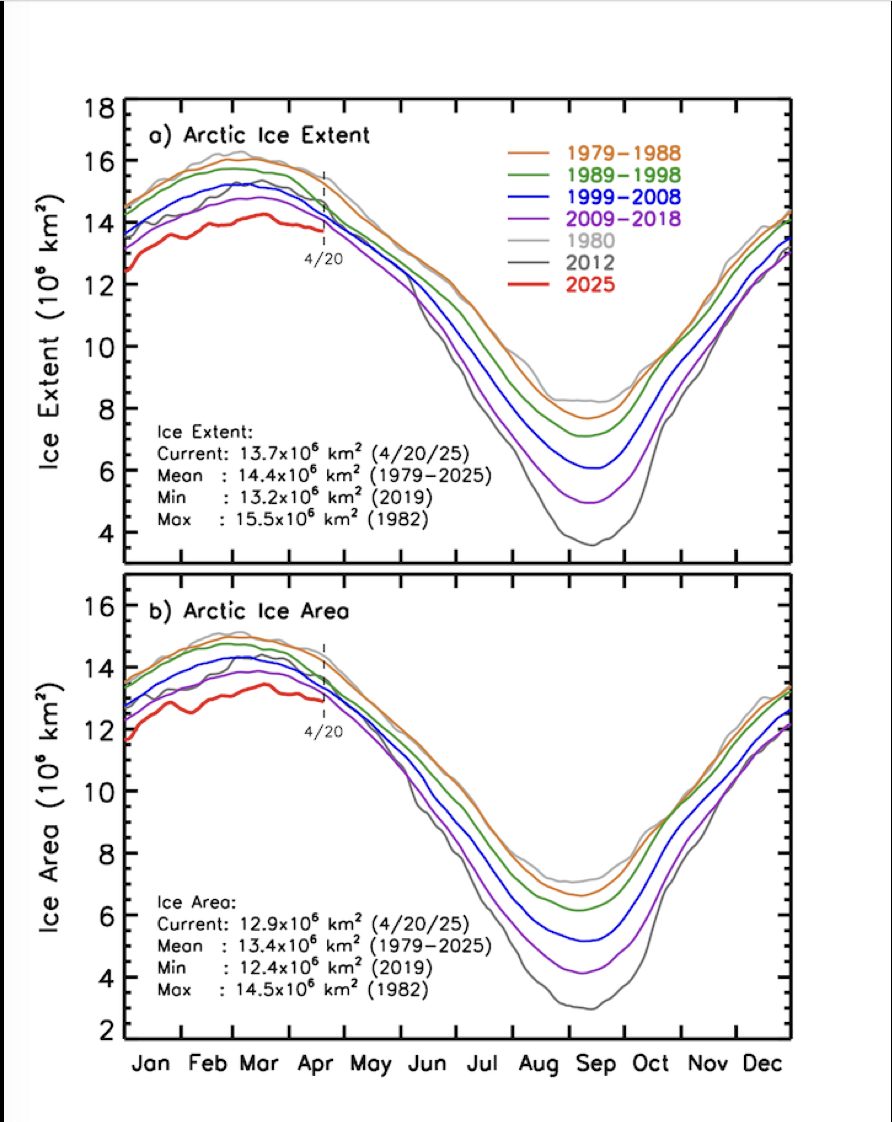
sympagic species
Arctic ice sheet community
some are endemic - can not be found anywhere else
What does the antarctic community rely on
krill - pop size of krill is correlated with ice sheet area
Sea Level Rise globally
Rise in the next three decades (2050) is anticipated to be, on average: 10 - 14 inches (0.25 - 0.35 meters) for the East coast;
14 - 18 inches (0.35 - 0.45 meters) for the Gulf coast;
4 - 8 inches (0.1 - 0.2 meters) for the West coast;
8 - 10 inches (0.2 - 0.25 meters) for the Caribbean;
6 - 8 inches (0.15 - 0.2 meters) for the Hawaiian Islands; and 8 - 10 inches (0.2 - 0.25 meters) for northern Alaska.
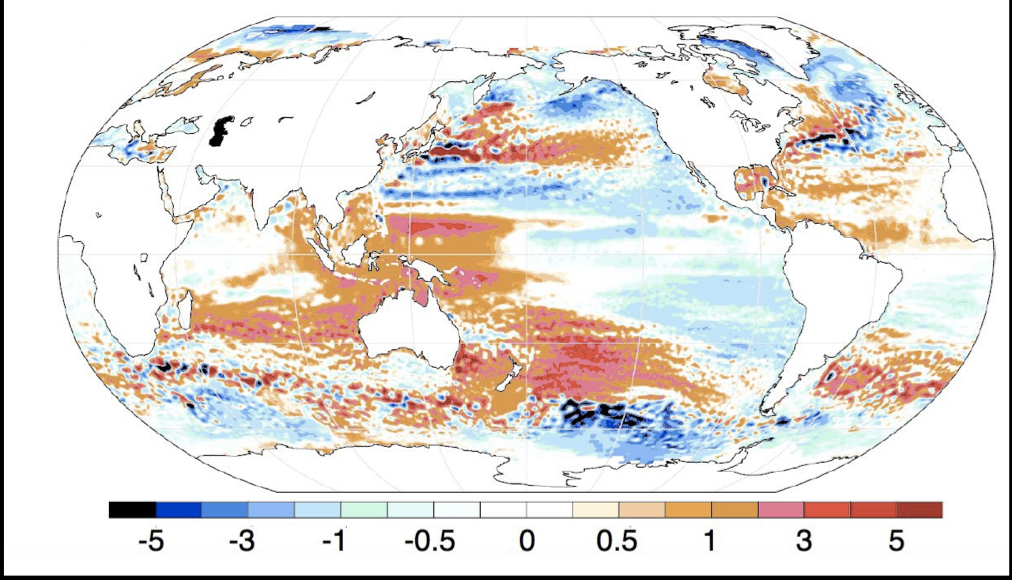
What are the biological impacts of sea level rise
Depth increases Light decreases
Salinity increases in higher zones
Increase sediments in the water
Further decreases light
Storm and Precipitation
Hurricane form relatively over warm sea surfaces
likely that warming will cause hurricanes in the coming century to be more intense globally and have higher rainfall rates than present day hurricanes
Ocean Acidification
reduction in the pH of the ocean over time; due to uptake of carbon dioxide (CO2) by the ocean from the atmosphere
Reaction for Ocean Acidification
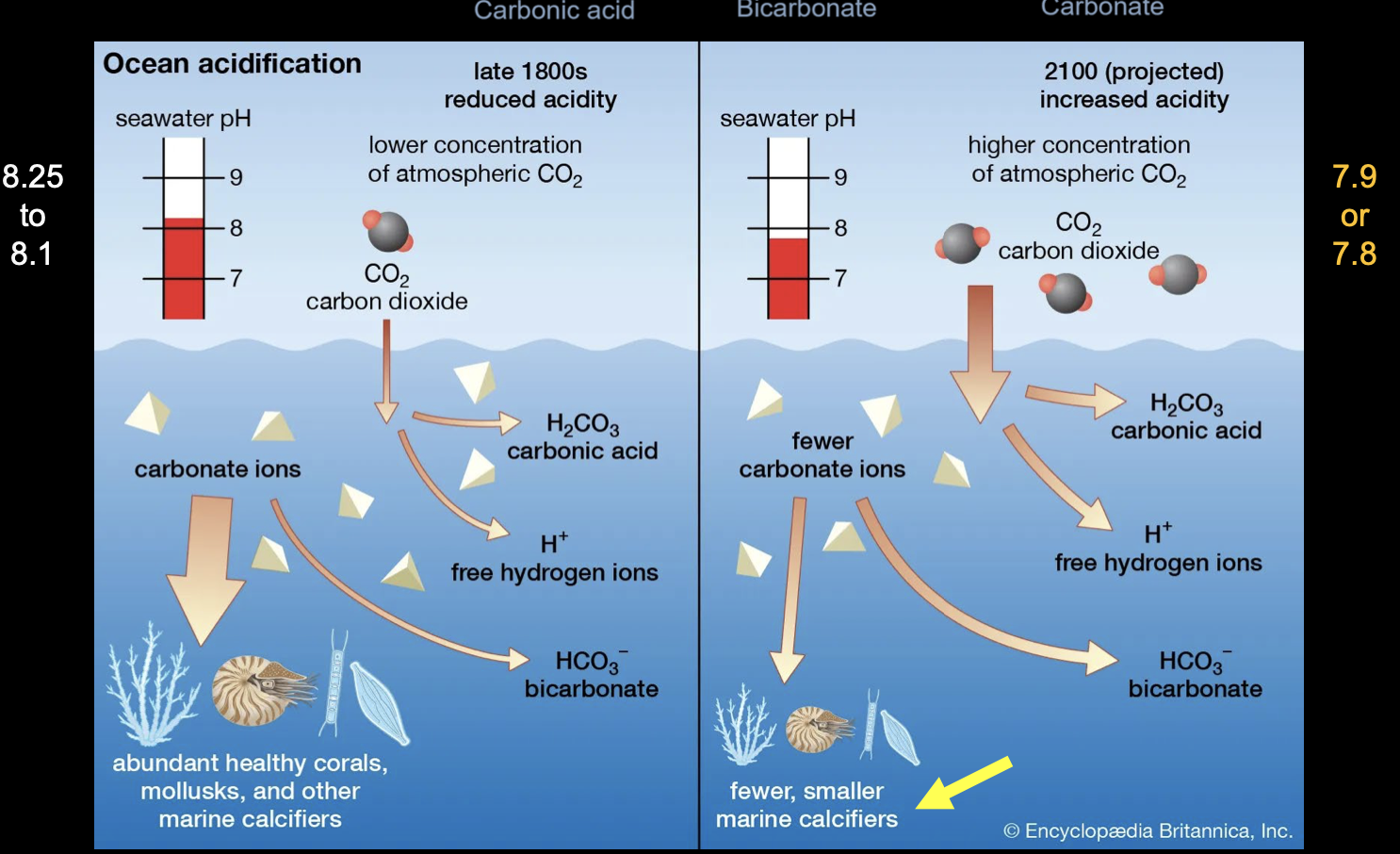
What was the latest CO2 reading
430.25ppm - has been increasing since 2015
What is pH and pCO2 trends linked with?
Dissolved inorganic carbon
pH will reduce by .3 unit to 7.8 in 2100
Biological Impacts
Calcifiers
• Reduced calcification
Fish
• Physiology • Life history
What is the impact on plankton?
Acidification will inhibit calcification by plankton
(pteropods, foraminifera, coccolithophores)
Impacts on corals
Acidification will inhibit coral ability to deposit
calcium carbonate and build reef structure
Impacts on calcareous, crustose coralline algae
Decrease in the taxonomic diversity of coralline algae with increasing acidification with more than half of the species lost in high pCO2 conditions.
And decrease in percent cover.
Impacts on fish life history
Common prediction is that OA affects growth, especially during early life history
Regulating acid-base balance of cells occurs via active ion transport, and requires energy
Less energy therefore available for higher functions
Does acidification influence rates of mortality
Yes
Effects on early life stages may continue after recruitment
Juveniles reared in high CO2 treatments suffer higher predation mortality
Adaptation
change in behavior, physiology, structure, etc of an organism to be more suited to an environment
Hope for climate change besides adaptation
Potential mechanism to counter rapid climate change
Evolution can be rapid
Adaptation to ocean warming
Symbiont generally viewed as ‘weaker link’
Symbionts vary in their thermal resistance
Some coral-symbiont combinations react better to thermal stress
Variation on which natural selection can act
How did corals adapt
hosting thermally-resistant zooxanthellae
Acclimation
process or result of becoming accustomed to new environmental conditions
Involves physiological, anatomical and/or morphological adjustments within a single organism that improves performance in response to change
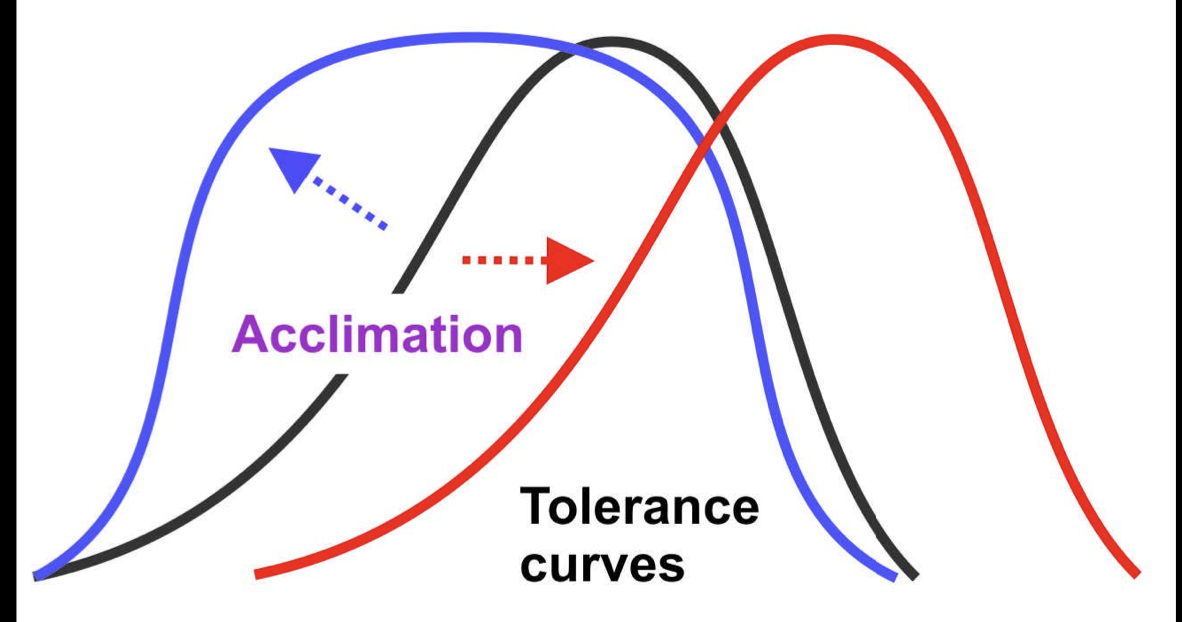
Transgenerational acclimation
occurs when the performance of offspring in a particular environment is improved when parents have experienced the same environment.